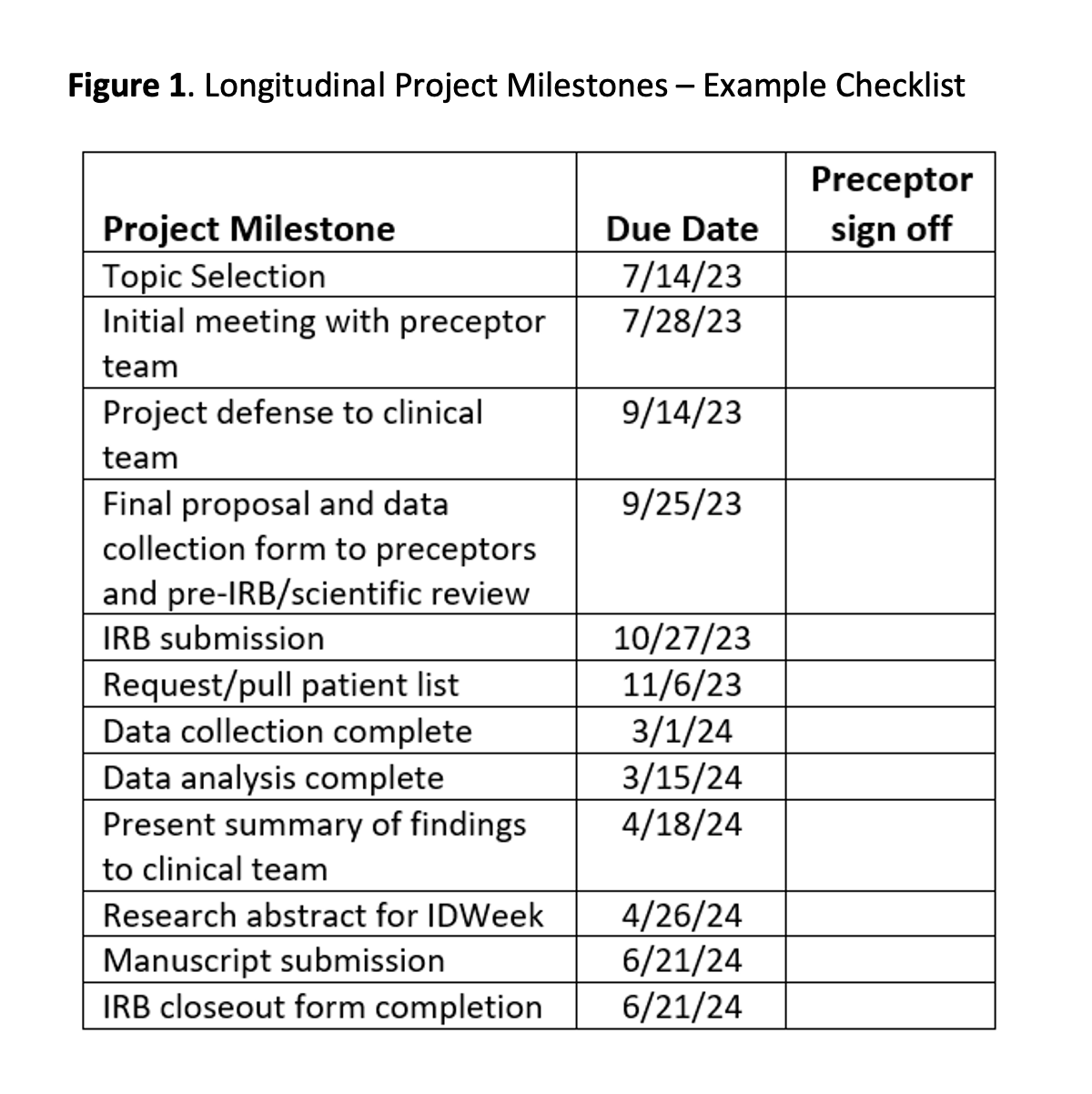Best Practices for Getting Young Clinicians into Research
This time of year means new trainees will begin their careers and are excited to take on research projects. However, they may have limited to no experience in this area. Here is an opportunity to give them structure and guidance when committing to longitudinal trainee research.
This time of year is exciting because training programs have wrapped up and new trainees are eagerly beginning their clinical careers. It also means research training curriculums start anew. Scholarly activity, including training in clinical research or quality improvement, is a major component of many programs, helping to build skills in project management, data analysis, and application of results to improve patient care. In this article, we highlight important best practice considerations for the success of longitudinal trainee research.

Project Planning
The first step when beginning a research project is to select the research topic or question. Formulating research ideas for trainees can often be a challenging or frustrating step; however, it is critically important for project success. The FINER criteria can help researchers design a well-developed research question (Table 1).

Valuable practice-based research evaluations for year-long learners may include pre-post study of a new test or service, comparison of two therapies used for identical indications, or evaluating risk factors for specific patient outcomes.1,2
Once a research project topic is selected, there are several steps to plan prior to the IRB process:
- Define the research team
- Assign primary mentor vs secondary mentors and discuss roles and order of authors for submissions such as research abstracts or publications upfront
- Select an appropriate study design to answer the question
- Chosen study design should be feasible to complete within a year-long timeframe (ex retrospective cohort, case-control, or quasi-experimental studies)
- Build the primary and secondary objectives using the PICOT criteria (Table 1)
- Set major milestones that are agreed upon by the team; we suggest making a list or calendar (Figure 1)
After initial project planning is complete the IRB process can begin, including drafting the research proposal and working with the IRB team to gain study approval. Data collection documents should be developed following best practices for coding and organization which prepares for efficient data analysis. The team of research mentors should support the trainee through this process with writing support and proposal feedback prior to IRB submission and additional guidance throughout the data collection process. In addition, institutional support for research preceptors is also crucial, including protected time for research and precepting, professional development specific to research, and financial support for scholarship (conference attendance, publication fees, etc.).
Dissemination of Research Findings
An important step following completion of research projects is the dissemination of findings. The first step is often to prepare a research abstract for submission to present the findings in the form of a poster or oral presentation at a local, national, or international conference (ex IDWeek). Teams may additionally choose to pursue publication in a peer-reviewed journal, a process that may take months to over a year. Suggested steps in the manuscript preparation process are reflected in Table 2.3

Final Thoughts

Practice-based research is an important component of clinical training programs. Teamwork and training via an organized curriculum improve the likelihood of completing projects within a 1-year program.
References:
1. Fandino W. Formulating a good research question: Pearls and pitfalls. Indian J Anesth. 2019;63(8):611-16.
2. Weber RJ, Cobaugh DJ. Developing and executing and effective research plan. Am J Health Syst Pharm. 2008;65(21):2058-2065.
3. Hammond DA, Rech MA. A “how-to” guide for effectively writing a publishable research manuscript.J Am Coll Clin Pharm. 2020;3:818-824.
